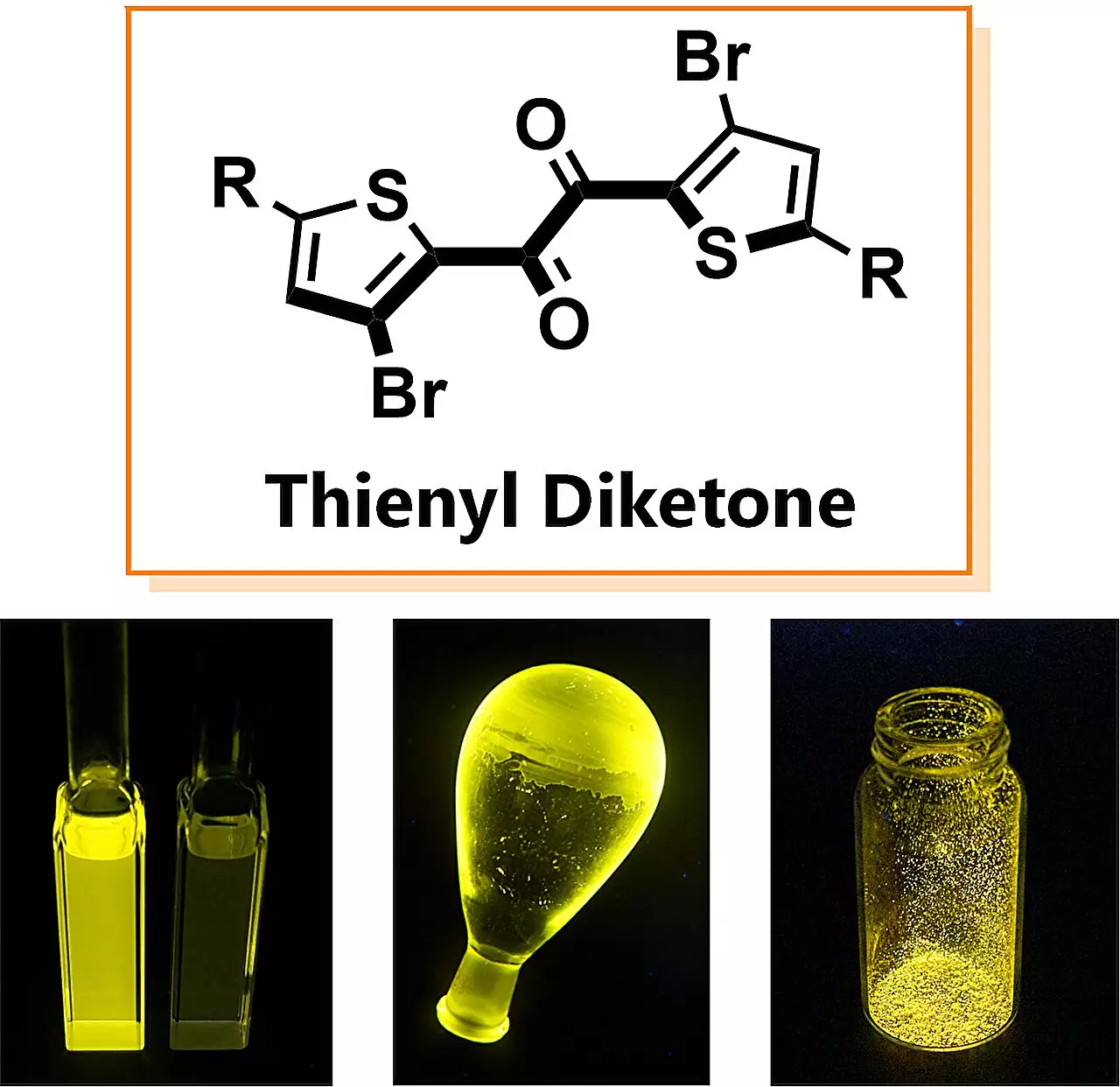In a remarkable turn of events for the field of organic chemistry, researchers from Osaka University have unveiled a groundbreaking organic molecule named thienyl diketone. This newly discovered compound is not merely a variation of previous materials but represents a significant leap in the efficiency of phosphorescence, achieving speeds over ten times faster than traditional phosphorescent materials. This astonishing finding, documented in the esteemed journal Chemical Science, holds the potential to catalyze innovations across multiple industries, including organic light-emitting diodes (OLEDs) and medical diagnostics.
The Challenge of Achieving High-Efficiency Phosphorescence
Phosphorescence, the phenomenon where a molecule transitions from a high-energy state to a lower one, is crucial for numerous applications that require efficient light emission. However, this process is frequently hampered by competing non-radiative pathways, resulting in energy dissipation as heat rather than light. Traditionally, the reliance on rare metals like iridium and platinum has created bottlenecks in the scalability and sustainability of phosphorescent materials. The quest for an efficient, cost-effective alternative has long been a challenge in modern material science.
What sets this study apart is not just the performance of thienyl diketone but the understanding of its underlying mechanisms. While prior attempts to enhance phosphorescence by modifying molecular structures proved fruitful to some extent, they were overshadowed by the more potent capabilities of metal-based compounds. The Osaka University team’s discovery offers more than a substitute; it opens the door for a transformative approach in material design.
Decoding Mechanisms and Future Implications
Dr. Yosuke Tani, the senior author of the study, emphasizes the serendipitous nature of this breakthrough. Initially, the performance of thienyl diketone puzzled the team, but as investigations progressed, a clearer picture emerged. This newfound understanding not only elucidates the workings of this molecule but beckons further research to unlock even greater potential applications.
The implications of this discovery are vast. With design guidelines for organic phosphorescent materials that do not depend on precious metals, industries could be on the brink of a significant transformation. Potential applications extend from OLED technology, where efficiency can drive down energy consumption and production costs, to medical diagnostics. Faster and more efficient phosphorescent materials could enhance imaging techniques and make diagnostic procedures more accessible and reliable.
A Shift Toward Sustainability and Innovation
The exciting advancements in thienyl diketone’s organic phosphorescence embody a critical shift toward sustainable innovation in materials science. By moving away from scarce and expensive materials, the research provides a viable pathway to greener technologies. Encouragingly, this breakthrough may inspire further exploration into organic compounds as a new class of superior phosphorescent materials, reshaping how we think about light emission in future technologies.
As the research team at Osaka University continues to expand on their findings, one cannot help but feel hopeful about the future implications. This breakthrough is not merely a scientific curiosity but a promising step toward overcoming long-standing challenges in material efficiency and sustainability. With the potential for game-changing applications, the study on thienyl diketone may just mark the beginning of a new chapter in the realm of organic phosphorescent materials.


Leave a Reply